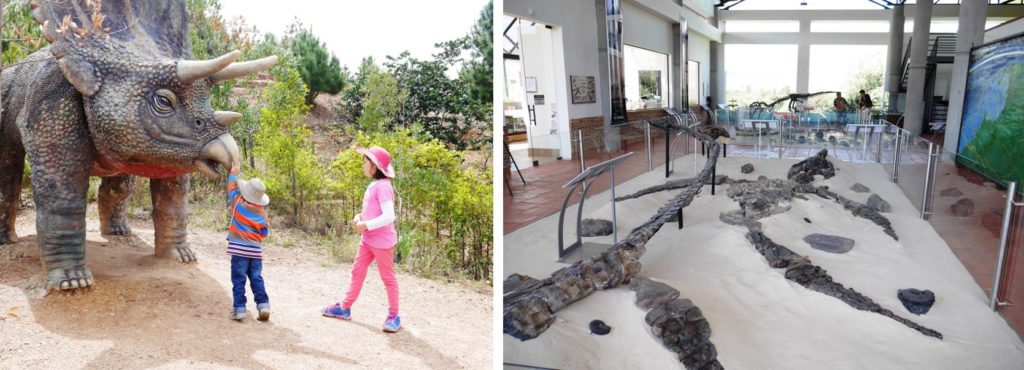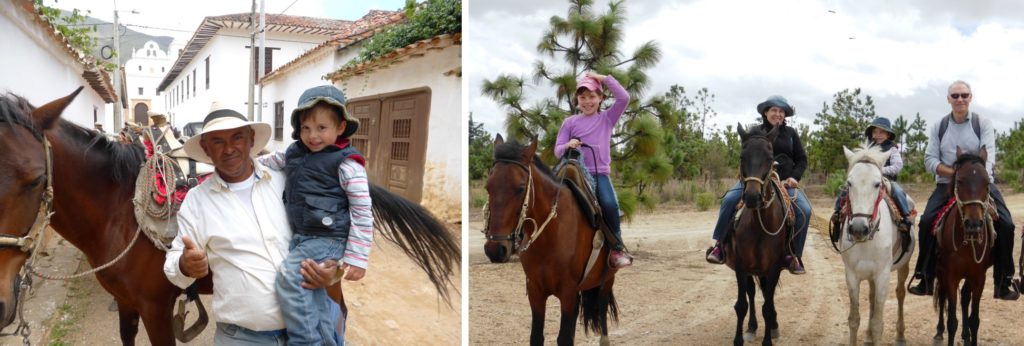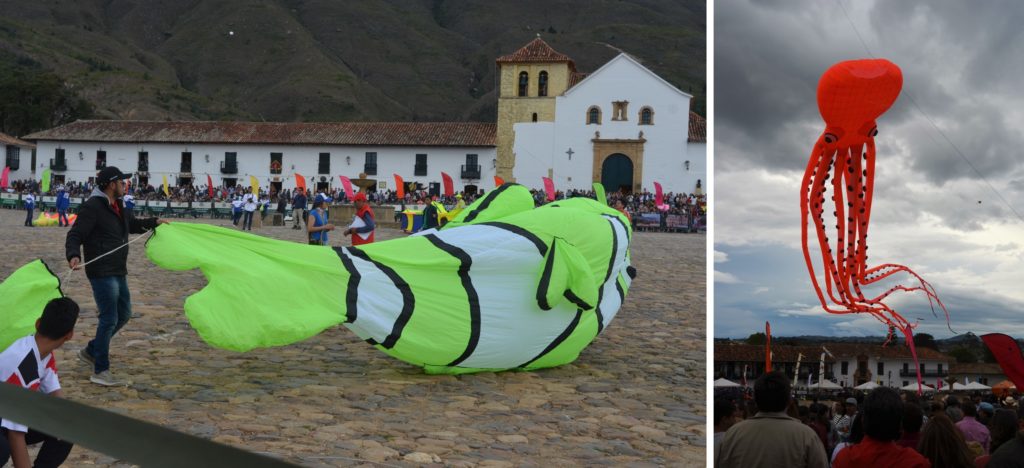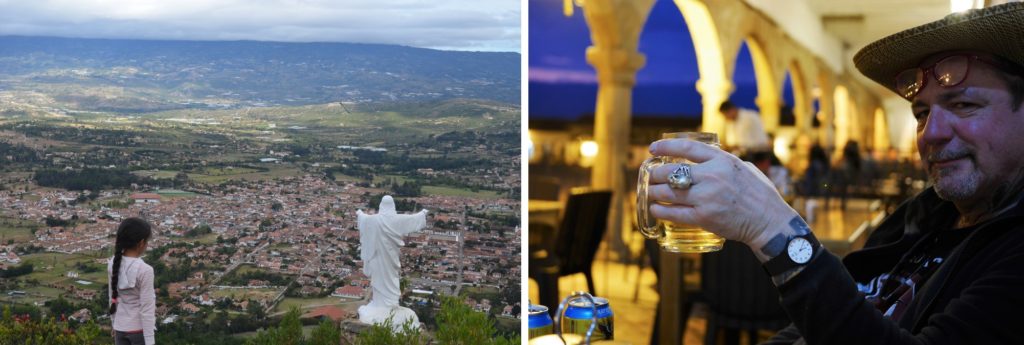Viva Villa de Leyva!
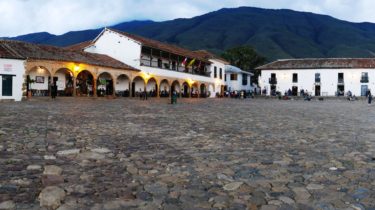
Villa de Leyva is a spectacular colonial town five hours north of Bogotá , and has been a popular short break from the capital since conquistador times. Although quite pricey – and filled with local tourists on the weekends – it’s a must for every visitor to the Colombia and offers a host of activities from adventure tours, hiking, history, gastronomy, vineyards, artesania, designer shops, kite festivals, art browsing, fossil hunting… or just chilling with a beer in the plaza.
For related posts see:
– Backroads of Santander
– Boyacá backroads to El Cocuy
– On the dinosaur trail in Villa de Leyva
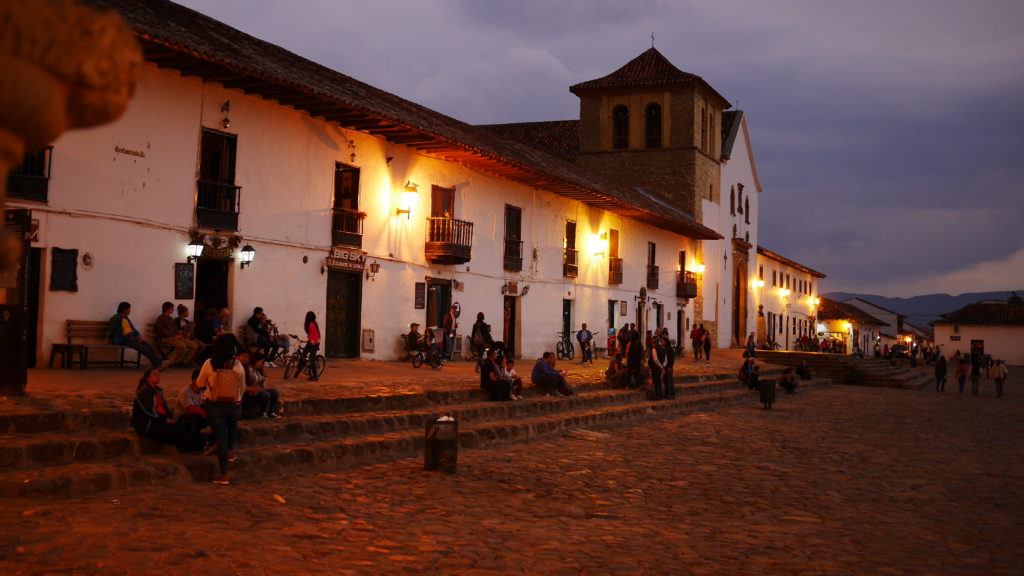
The immense main plaza is supposedly the largest in Latin America, the size of two football pitches, and as sparse as the rugged pioneers who built it back in the 1570s. Tourists lurch zombie-like over an unsettling stone sea, back-dropped by grey-green hills painted with shadows from passing clouds. Clanging church bells send doves skimming over the plaza. harried by hawks above. Shut your eyes and hear conquistadores clatter their horses over the rough cobbles. History seeps from every crack.

Turn to the side-streets that surround this stark centrepiece and you will find a gentler colonial charm where timber-framed houses hide chichi tourist shops, hotels and restaurants, and those clattering hooves are ponies taking tourists on the popular treks in the surrounding countryside. The surprise is the continuity of the colonial structures.
There is not one bit of naff architecture in the whole town. Even the petrol station has adobe walls and baked tile roof. The overall the effect is astounding, thanks to government decrees protecting the old town and insisting that all new construction is colonial style.

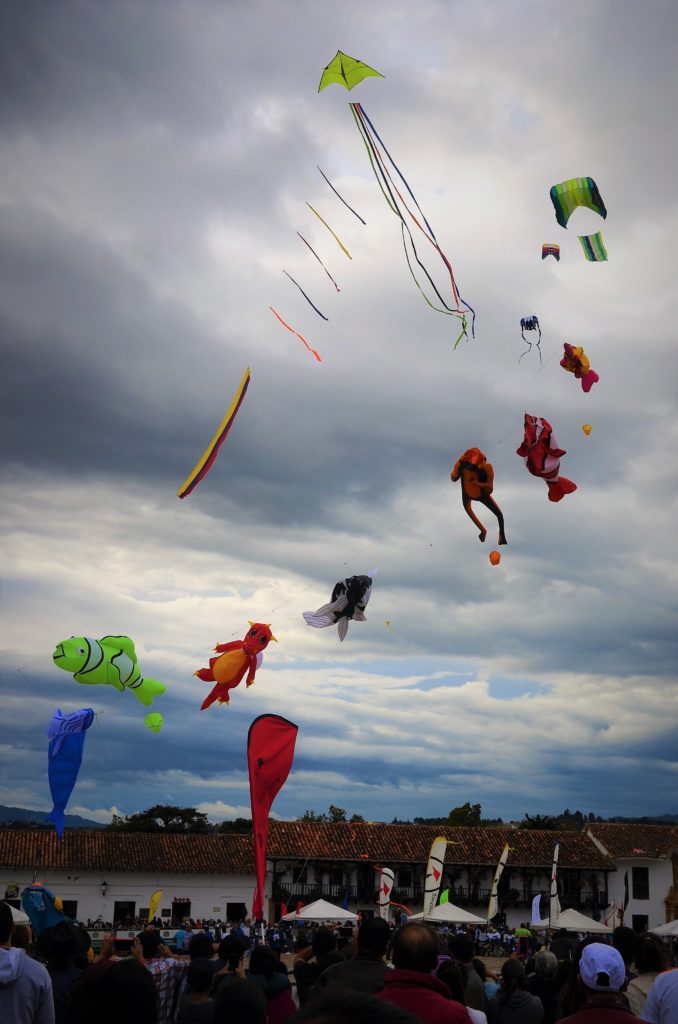
But there is something else special about Villa de Leyva. It is is 100% hassle free! Strangely, for a for a major tourist destination, there are no touts or street sellers and a welcome lack of those soul-numbing interactions we face every day on many city streets in Colombia; sidestepping glue-sniffers, dodging beggars, or paying off squeegee men at the traffic lights moments before a vendor thrusts a graphically-labelled porno DVD through your car window.
In fact Villa de Leyva has been a tourist attraction almost since its inception. Though initially founded as a barrack town for soldiers (which partly explains the large plaza, where regiments paraded) it soon became a get-away for wealthy Spanish families who enjoyed the dry warm climate (at 2100m, the valley is less chilly than most of the Andean towns), and olive groves that reminded them of Spain.
It was also HQ for religious orders, drawn to the area part of the evangelical conversion of the Muisca people who had their own religious bases in the valley. By the end of the 17th century – its historical apex – it had evolved into a major market town for wheat and vegetables, but this was ended by crop blights that heralded a new century of decline.

The town revitalised after Colombian independence and briefly hosted the new government in 1811. It achieved national heritage status in the 1950s.
Today the town is booming, and I was fascinated by the cram of ´colonial´ hotels being constructed a few blocks south of the plaza. Could the town ever fill all these new hotel rooms? I quizzed our horse guide, Raul. ´To be honest I think the inversionistas have gone a bit far,´ he replied, nodding to the very Colombian habit of everyone jumping on any money-spinning bandwagon until the wheels fall off.

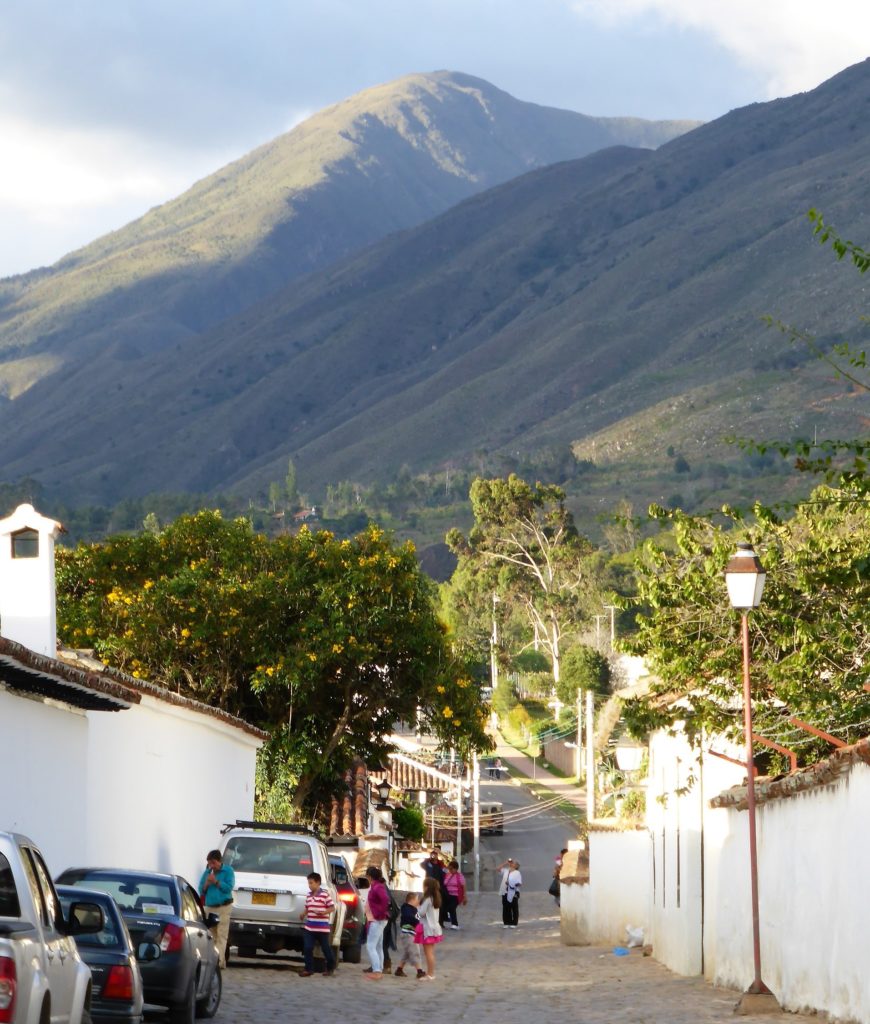
To try keep visitors coming the town has diversified a range of jollies such as midnight treks in the nearby ´desert´ (really just scrubland), horse treks, 4×4 motorbike excursions, hikes to nearby national parks, vineyards, gastro-pubs and a visits to a bizarre Gaudi-like terracotta house that seems to have slipped past the local planning bye-laws.
We opt for the 3-hour horse ride to various sites around town, including an impressive fossil museum where the bones of a giant marine predator lie sulking in a glass case. Food, shopping, churches and visits to museums fill up the rest of our long weekend, and a fruitless search for childrens swings.
My seven-year-old daughter, already unimpressed by the museums ´with only old things´, is bemoaning the lack of activities for youngsters. I explain to her gently that the conquistadors were not very good at playgrounds for kids. ´You´ll have to wait another 400 years, my dear´.
PRACTICALITIES
Trip planning: Villa de Leyva can be enjoyed as a long weekend break from Bogotá, or as a base for adventures in the surrounding Boyacá, or as part of a longer road trip through Boyacá and Santander.
See my related posts:
– Backroads of Santander
– Boyacá backroads to El Cocuy
The websites www.villadeleyva.com.co/ and www.villadeleyva.net/ have a lot of of info.
On bank holiday weekends the town packs out and even the drive into the town centre can take hours…on the weekdays it can be very quiet so if you don’t like crowds and queues go mid week. The Kite Festival in late August is the busiest weekend. Nearby Raquirá is smaller, quieter and cheaper and also very pretty town. Prices for artesania are much cheaper here than Villa de Leyva.
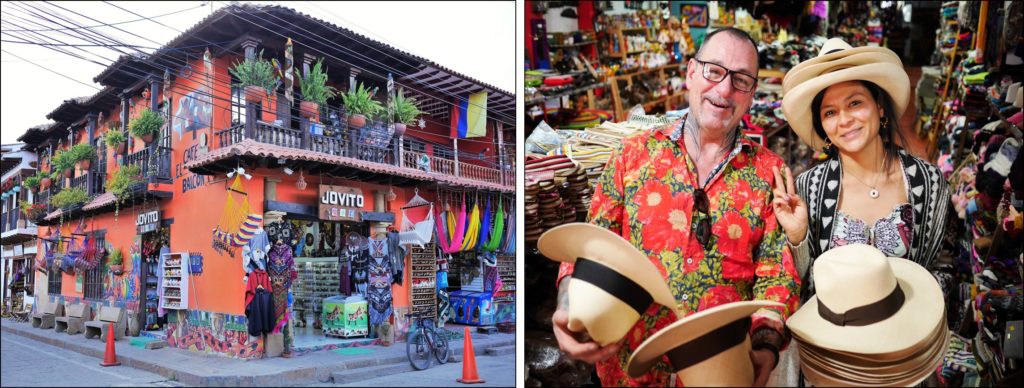
What to bring: Warm clothes for the evening, rain and sun gear if you go hiking.
Getting there by bus: direct from Bogotá to Villa de Leyva with Flota Valle de Tenza has around 6 direct buses a day, leaving from both Bogotá’s central bus station Terminal Central Salitre and from the Terminal Satélite del Norte. The north bus terminal will be much faster as its closer to the north highway and avoids Bogotá traffic jams. You can get a Transmilenio bus to the north terminal, get off at the ‘Terminal’ transmi station (one stop on from the Portal Norte). The Flota Valle de Tenza has timetables and more details. Coflonorte / Libertadores also has several buses a day from the Terminal Satélite del Norte
There are more frequent buses to the city of Tunja, then local buses ‘colectivos’ to Villa de Leyva, but these take longer.
Driving there: There are various routes from Bogotá to Villa de Leyva, but the shortest and fastest (150kms, 4 to 5 hours) is shown below via Samacá. This avoids the city of Tunja.
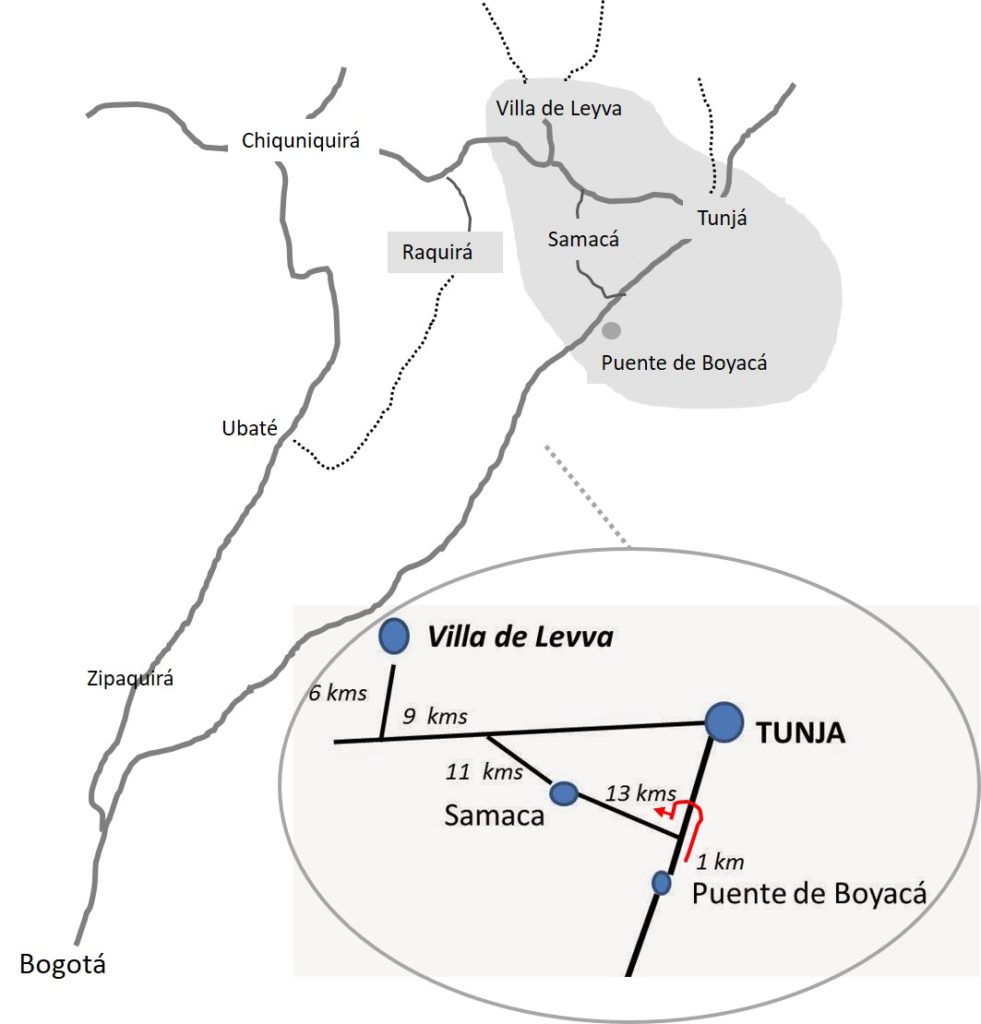
- Take main highway north from Bogotá towards Tunja.
- 1km north of the historic site of Puente de Boyacá, take the turn off west to Samacá. This is dual carriageway so you need to overshoot the turnoff for several kms before taking the ‘retorno’ (return) back towards Bogotá, then a sharp right onto the Samacá road which is marked.
- Pass through Samacá (there is a right turn at the plaza) and after 24 kms meet the main road, head west. Villa de Leyva turnoff (just after a toll booth) is well signed.
Accommodation. There is a wide range from luxury hotels to simple hospedajes, hostels, cabins and campsites, in and out of town, all on Booking.com. Some residents offer camping in their gardens. In my experience there is no need to book ahead, just turn up and browse around for the best deal, with the exception of the Kite Festival weekend (Festival de Las Cometas) at the end of August then the town packs out, for that weekend book ahead.
Things to do
